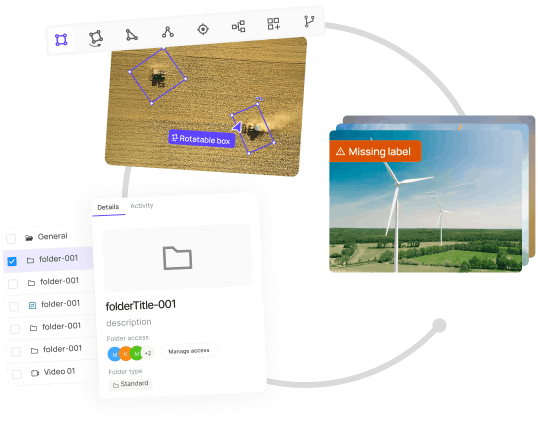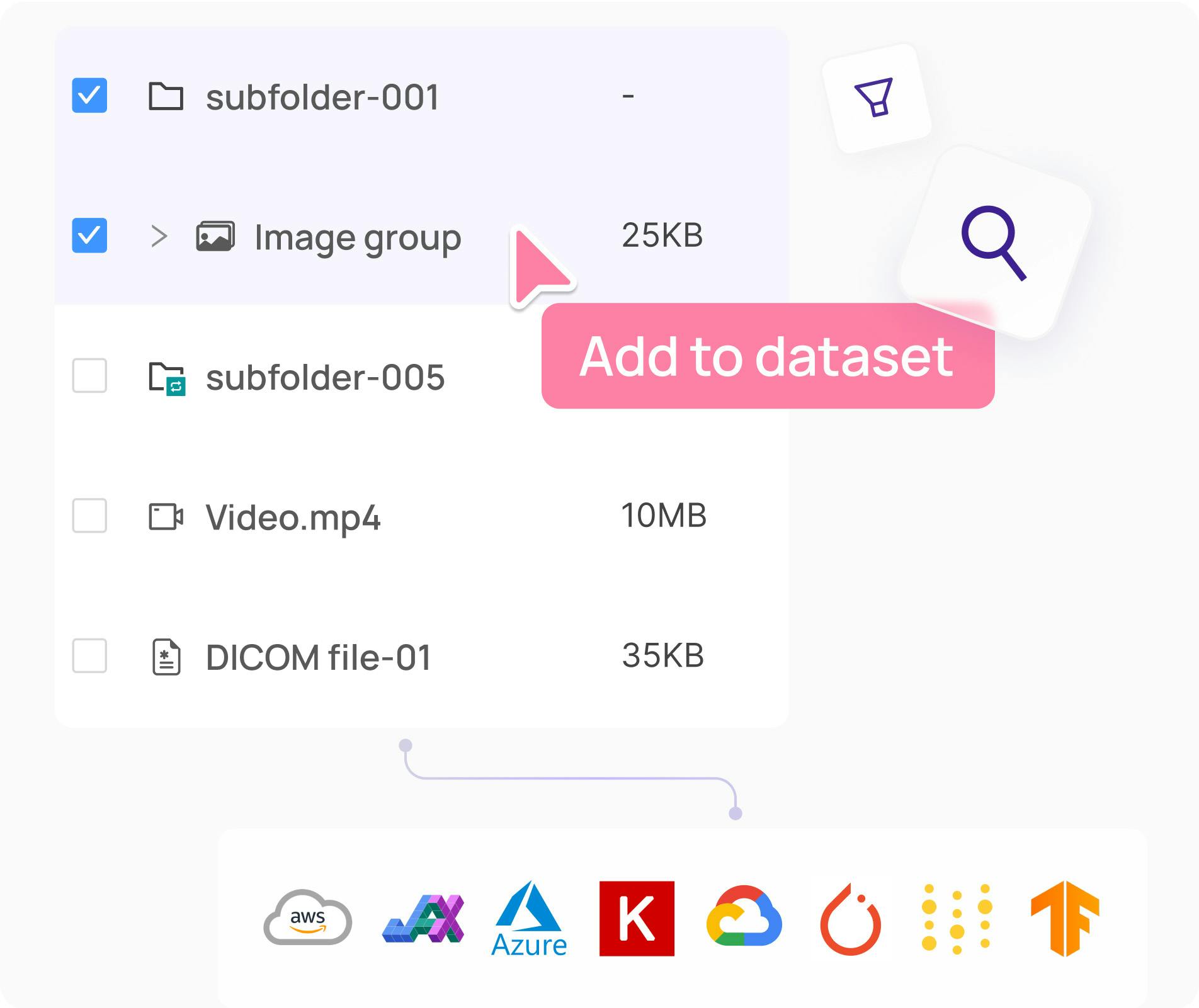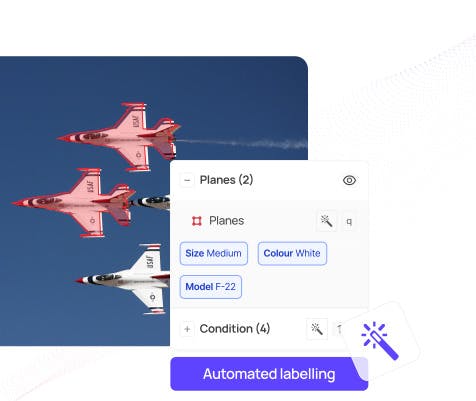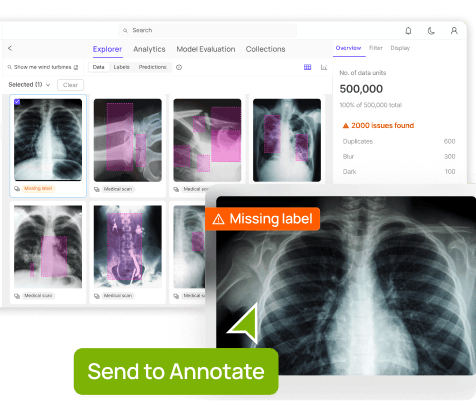Contents
Why are AI annotation platforms needed for developing AI models?
What to Look for in a Data Annotation Platform?
Top AI Annotation Platforms for Best Data Curation
Final Thoughts: Which Data Curation Platform Should You Choose?
Encord Blog
AI Annotation Platforms with the Best Data Curation (2025)
5 min read
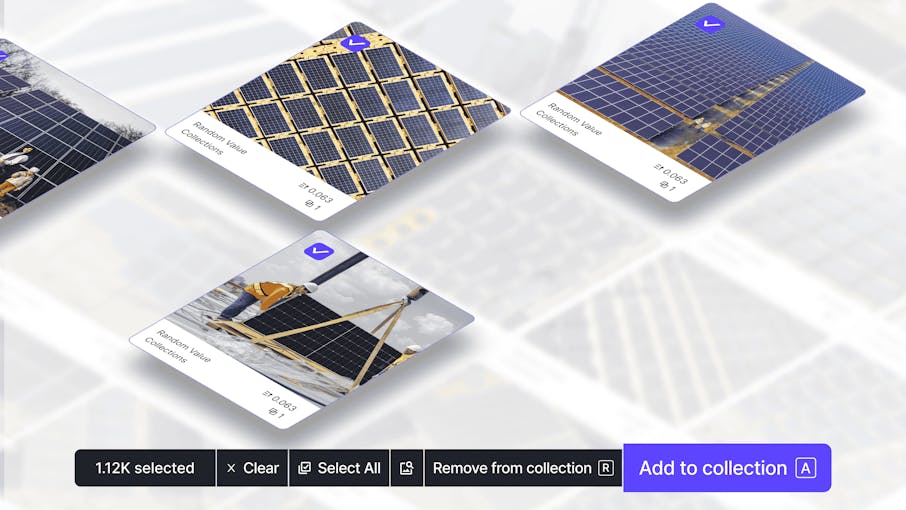
This guide to AI Annotation Platforms with the Best Data Curation presents the top AI data curation platforms, breaking down their key features and best usage.
Machine learning engineers and data practitioners spend most of their time sorting out unstructured data. And after all their effort, they end up with data full of mistakes.
But with the help of AI annotation platforms, engineers can train SuperData to produce high-quality, error-free data faster with less manual labor.
Why are AI annotation platforms needed for developing AI models?
In easy terms, data annotation helps ML algorithms understand your commands. AI annotation platforms train your AI models with clear and accurate data. Since AI can process properly labeled data more efficiently, this leads to increased operational efficiency and reduced costs.
It is hard for AI programs to separate one set of data from another. Let's say you fed your ML model with thousands of images of pencils. But that is not enough. You have to label the data (the images), showing which parts of the photos contain the pencils.
This helps AI identify how pencils look. If you label the images as 'pens', not 'pencils,' your model will identify those pencils as pens. This is how labeling audio, text, video, images, and all sorts of data can help train AI models.

Image 1 - Master Data Annotation in LLMs: A Key to Smarter and Powerful AI!
AI annotation platforms prevent the risks of models underperforming or producing biased results. Moreover, curating data with AI platforms helps engineers reduce their manual effort and train AI faster.
What to Look for in a Data Annotation Platform?
To select the best AI data annotation platforms, consider these seven key elements.
- Prioritization Automation: The AI data curation platform should be able to automate the data prioritization tasks, including filtering, sorting, and selecting the most valuable and relevant data from large datasets. It should also offer automation tools (e.g., SAM, GPT-4o) to speed up annotation.
- Customizable Visualization: The AI should offer customizable visualization in the form of tables, plots, and images. This helps you spot biases, edge cases, and outliers by visualizing data.
- Model-Assisted Debugging: Look for model-assisted debugging features like confusion matrics. Debugging features help you spot errors like false positives and negatives.
- Multiple Modality: Look for platforms that can handle various data types and annotation formats, such as text, medical imaging formats, videos, bounding boxes, segmentation, polylines, and key points.
- User-friendly interface: The platform’s interface should be a simple and configurable UI that is easy to navigate, even for non-technical users. It should also help you design automated workflows and integrate with necessary platforms.
- Streamlined Workflows: The tool should let you create, edit, and manage labels and annotations. Additionally, it should let you integrate into machine learning pipelines and storage systems like cloud storage, MLOps tools, and APIs.
- Team Collaboration: Look for features that allow team members to collaborate and share feedback on data curation projects.
Top AI Annotation Platforms for Best Data Curation
Here are the top 8 data annotation platforms for efficiently and effectively curating data.
- Encord

Encord is a unified, multimodal data platform designed for scalable annotation, curation, and model evaluation. It lets you index, label, and curate petabytes of data.

Image 3 - Multimodal Data Annotation Tool & Curation Platform | Encord
It supports images, video, text, audio, and DICOM, making it ideal for teams working across computer vision, NLP, and medical AI. Encord also supports various integrations to connect your cloud storage, infrastructure, and MLOps tools. You can even find useful model evaluation tools inside Encord.
Special Features
- Human-in-the-loop labeling use cases
- Natural language search
- AI-assisted labeling (SAM-2, GPT-4o, Whisper)
- Rubric based evolution
- Seamless cloud integration (AWS, Azure, GCP)
- Label editor
- SOC2, HIPAA, and GDPR compliance
According to G2: 4.8 out of 5. Most reviewers gave Encord a positive rating for its robust annotation capabilities and ease of use. Some users also praised Encord's collaboration and communication tools.
Best for: Generating multimodal labels at scale and curating data with enterprise-grade security.
{{try_encord: : Encord}}
- Labellerr

Labellerr is an AI-powered data labeling platform offering a comprehensive suite for annotating images, videos, text, and more. Its customizable workflows, automation tools, and advanced analytics enable teams to produce high-quality labels at scale rapidly. Labellerr supports collaborative annotation, robust quality control, and seamless integration with popular machine learning frameworks and cloud services.
Special Features
- Automated and model-assisted labeling
- Customizable annotation workflows and task management
- Quality assurance with review and feedback loops
- Collaboration tools for teams and vendors
- Version control and centralized guideline management
- Multi-format and multi-data-type support (images, video, text, audio)
- Real-time analytics and performance dashboards
- Secure, enterprise-grade deployment
According to G2: 4.8 out of 5. Labellerr is highly rated for its ease of use, efficiency, and strong customer support. Users highlight its ability to handle complex projects and automation that reduces manual effort, though some mention occasional performance lags with large files and a desire for improved documentation.
Best for: Enterprises and teams needing scalable, collaborative, and automated annotation workflows across diverse data types.
3. Lightly

Lightly is a data curation platform designed to optimize machine learning workflows by intelligently selecting the most relevant and diverse data for annotation. Rather than focusing on manual annotation, Lightly uses advanced active learning and self-supervised algorithms to minimize redundant labeling and maximize model performance.
Its seamless integration with cloud storage and annotation tools streamlines the entire data pipeline, from raw collection to training-ready datasets and edge deployment.
Special Features
- Smart data selection using active and self-supervised learning
- Automated data curation for large-scale datasets
- Integration with existing annotation tools and cloud storage
- API for workflow automation
- Data distribution and bias analysis
- Secure, on-premise or cloud deployment options
According to G2: 4.4 out of 5. Users praise Lightly for its intuitive interface, time-saving automation, and ability to reduce labeling costs and effort significantly. Some reviews note a learning curve for advanced features and desire more onboarding resources.
Best for: Teams seeking to optimize annotation efficiency, reduce redundant labeling, and accelerate model development, especially for large, complex visual datasets.
4. Keylabs

Keylabs is an advanced annotation tool and operational management capability that prepares visual data for machine learning. The platform meets the needs of various industries, including aerial, automotive, agriculture, and healthcare. It presents a range of annotation types, including cuboids, bounding boxes, segmentations, lines, multi-lines, named points, and skeleton meshes.
Special Features
- ML-assisted data annotation
- It can be installed anywhere
- User roles and permission flexibility
- Project management
- Workforce analytics
According to G2: 4.8 out of 5. Many users love Keylabs for its unlimited video annotation length, unmatched quality control, and customization capabilities. However, some might find the lack of natural language processing limiting.
Best for: Companies looking for a tool for annotating images and videos with higher quality control.
5. CVAT

CVAT helps you annotate images, videos, and 3D files for a range of industries, including drones and aerial, manufacturing, and healthcare and medicine. It supports diverse annotation types such as bounding boxes, polygons, key points, and cuboids, enabling precise labeling for complex computer vision tasks.
With AI-assisted features like automatic annotation and interpolation, CVAT significantly speeds up the labeling process while supporting collaborative workflows and integration with popular machine-learning pipelines.
Special Features
- Image Classification
- Object Detection
- Semantic and Instance Segmentation
- Point Clouds / LIDAR
- 3D Cuboids
- Video Annotation
- Skeleton
- Auto-Annotation
- Algorithmic Assistance
- Management & Analytics
According to G2: 4.6 out of 5. According to reviewers, it's an easy-to-use AI data annotation tool with many annotation options. However, some felt that the learning curve can be time-consuming.
Best for: Training computer vision algorithms.
6. Dataloop

Dataloop helps you collaborate with other data practitioners and build AI solutions. Here, you will find a large marketplace of models, datasets, ready-made workflow templates, etc. It supports multimodal data annotation, including images, video, audio, text, and LiDAR, and can be integrated with other data tools and cloud platforms. You can also train, evaluate, and deploy ML models.
Image 9 - Data Annotation | Dataloop
Special Features
- API call for pipeline design
- Complete control over data pipelines
- Marketplace with hundreds of pre-created nodes
- Real-time human feedback
- Industry-standard privacy and security
According to G2: 4.4 out of 5. Reviewers find this tool highly versatile and scalable, supporting various annotation types. However, some are dissatisfied with its steep learning curve and fewer customization options.
Best for: Building AI solutions with easy-to-use and versatile features.
7. Roboflow

Roboflow lets you build pipelines, curate and label data. Also, train, evaluate, and deploy your computer vision applications.
Roboflow Annotate offers an AI-powered image annotation that accelerates labeling with tools like Auto Label and supports various annotation types. It offers seamless collaboration and integrates with Roboflow’s Internal systems, Edge and Cloud Deployment, and Training Frameworks.
Special Features
- Industry-standard open-source libraries
- Countless industry use cases
- Enterprise-grade infrastructure and compliance
According to G2: 4.8 out of 5. Many reviewers prefer Roboflow for its outstanding UI and customer service. One reviewer stated that the box prompting features have become outdated.
Best for: Building computer vision applications using a free, open-source platform.
8. Segments.ai
Segments.ai is a multi-sensor data annotation platform that allows simultaneous labeling of 2D images and 3D point clouds, improving dataset quality and efficiency.
It offers advanced features like synced tracking IDs, batch mode for labeling dynamic objects, and merged point cloud views for precise annotation of static scenes.
With machine learning-assisted tools and customizable workflows, Segments.ai helps teams accelerate labeling while maintaining high accuracy across robotics and autonomous vehicle applications.
Special Features
- 1 click multi-sensor labeling
- Fuse information from multiple sensors
- Real-time interpolation
- ML-powered object tracking
- Simple object overview
- Dynamic objects labeling with Batch Mode
- Auto-labeling with ML models
According to G2: 4.6 out of 5. Reviewers positively rated Segments.ai for having many segmentation annotation features. However, some say that finding the multi-sensory annotation requires a bit of a learning curve.
Best for: Enterprises wanting faster multi-sensor labeling features.
Final Thoughts: Which Data Curation Platform Should You Choose?
Choosing the right data curation platform depends on your team’s size, industry, and specific needs. While the mentioned tools offer solid annotation and curation features, basic platforms no longer meet the demands of today’s complex AI projects.
So, when your projects demand scalability, top-tier data quality, and seamless collaboration, especially for high-stakes AI applications, Encord outperforms the rest. Its purpose-built platform combines advanced automation, multimodal support, and enterprise-grade security to accelerate workflows without compromising accuracy.
Ready to elevate your AI projects with the most scalable and secure data curation platform? Discover how Encord can accelerate your annotation workflows and boost model accuracy today.
{{try_encord: : Encord}}
Explore the platform
Data infrastructure for multimodal AI
Explore product
Explore our products
- An AI annotation platform is a tool that helps label raw data (images, video, audio, text) so machine learning models can understand and learn from it. These platforms improve model accuracy by ensuring high-quality, well-structured datasets.
- Proper data annotation trains machine learning algorithms to correctly interpret inputs. Without accurate labeling, models can misclassify data, leading to poor performance and biased results.
- Some of the top platforms for 2025 include Encord, Labellerr, Lightly, Keylabs, CVAT, Dataloop, Roboflow, and Segments.ai. These tools support multimodal data, automation, collaboration, and quality control.
- Encord stands out for its robust security features (SOC2, HIPAA, GDPR), advanced automation, and multimodal data support, making it ideal for high-stakes enterprise AI projects.
